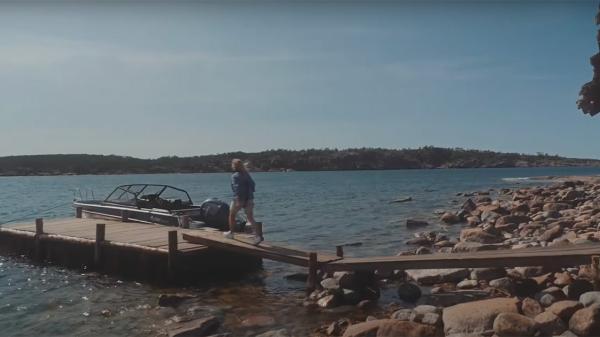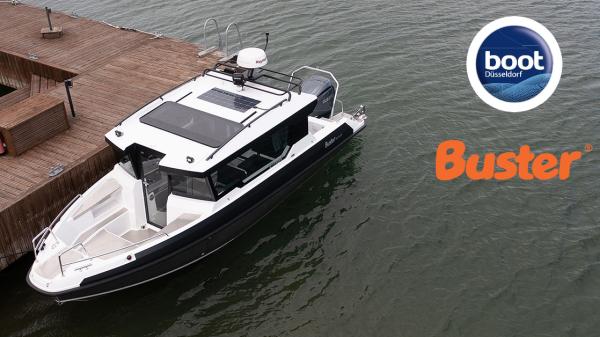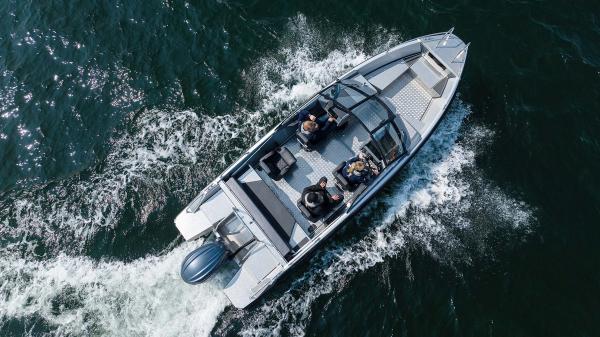15.11.2016
Versatility and ease of use are key design criteria for Buster boats
New Buster boats are designed in adherence to the Buster brand DNA, and the changes that are made are considered and managed carefully also by paying attention to the wishes of users. Naval Architect Kai Ilmanen tells about his work and how Buster boats are designed.
We work continuously to develop the line-up of Buster boats and to come up with something new for upcoming models. Results of my design work can be seen in models such as the Buster S and the Phantom launched this past summer. At present, I already have new models shaping up on my virtual drawing board.
When designing new boats, a key point is to ensure that each new boat works smoothly together with the relevant engine models. Buster also considers it important that the design work stays in touch with the changing times and that today’s boaters can be provided with modern boats suitable for the 2010s.
Marine electronics are advancing continuously, as perhaps best exemplified by the Buster Q system developed by Buster. Buster’s own navigation and infotainment system greatly facilitates my design work, since the consoles can now be designed to be harmonious with that system, paying close attention to ergonomics.
Current trends include ease of use, performance and integrated electronics
Currently the key trends in boat design are versatility, ease of use, solid performance and integrated electronics. The popularity of aluminium as boat building material continues to increase. Cabin boats with accommodation have lost some of their appeal, and currently there is a trend towards boats that are easy to use and are able to travel fast from the marina to the destination and back and are also aptly suited for all-round leisure boating together with family and friends.
The design work for a new boat model is always based on market needs and customer wishes. An important consideration for boat designers is the feedback they get from boaters, boat dealers and importers.
At the beginning of a new design project, the intention is to prepare a comprehensive description of the design requirements and conceptualise them as boat dimensions and tangible features. The basic concept of a new boat is based on these requirements, to include the boat's basic dimensions, engine power category and maximum number of passengers. I use this information as the starting point when commencing the design work for a new boat model. The dimensions and the specifications are honed further as the design work goes ahead, when the boat is 3D modelled in detail.
New Buster boats are designed in adherence to the brand DNA with careful consideration of the changes to be made
Like any strong boat brand, Buster, too, has its own DNA that designers adhere to when working on new models. First and foremost, boat designers endeavour to build the boat brand, develop and maintain it and carefully manage the changes they make into it. The design work they do to create new versions of boat models pays homage to the history and the form language of that model.
This is an ongoing development process, whose pace is guided by both the need to create something new and the lifecycle of existing models in production.
One of the key values of Buster is that the boats are effortless to use and maintain: Buster is the boater’s care-free choice. Other cornerstones of the design work are safety, seaworthiness and high resale value. The aim is to make every new Buster better, more capable, safer and easier to use than the preceding models.
Quick prototype building is an unparalleled advantage of aluminium boats
At the early stages of the design work, pencil is still an irreplaceable tool. Hand-drawn perspective drawings continue to play an important role in the conceptualisation and the search for forms.
However, the computer today serves as the actual drawing board: 3D modelling has revolutionised naval engineering and increased accuracy and efficiency in boat building. Computers can be used to simulate the behaviour of structures in different circumstances to theoretically ensure that the boat designs are durable and safe to use.
Thanks to the accuracy of 3D modelling, the need for prototypes today is not as extensive as before. However, life-sized models of an entire boat or a part of it continue to serve the purpose of ensuring the functionality of boat interiors, for example. Aluminium boats have a great advantage in that their prototypes are quick to build. In the best case, the drawing of an aluminium boat on the computer screen can translate into a ready-to-use prototype in a matter of weeks, which is impossible with other materials.
Kai Ilmanen
Naval Architect and Designer
Kai Ilmanen
• Naval Architect and Designer
• 25+ years as a business owner and Naval Architect in Finland and Italy and almost 20 years as Marine Surveyor.
• Naval engineering and design work for a number of boat manufacturers, including Buster, Yamarin, Suvi, Terhi, Masmar, Sargo, Sailfish, Alucraft, Mobimar, Flipper and Merima
• His largest vessel design is Sunborn Gibraltar, the 142-metre superyacht hotel. Additionally, he has designed yachts in the size category 25 to 65 metres.
• In CE certifications, he has been the Finnish representative of IMCI (The International Marine Certification Institute) for 12 years
• He is a member of Finnboat (the Finnish Marine Industries Federation)


